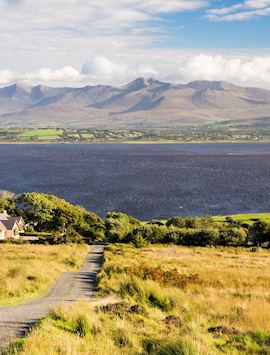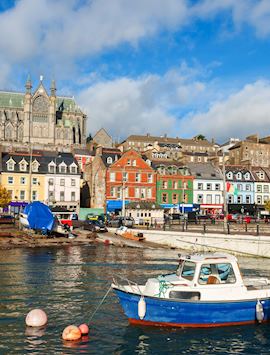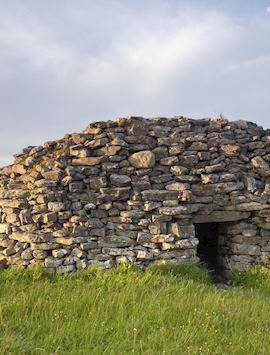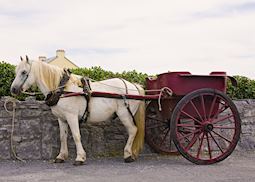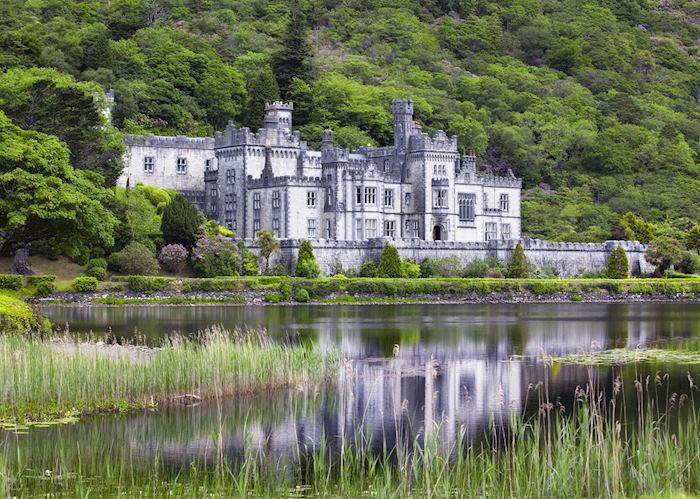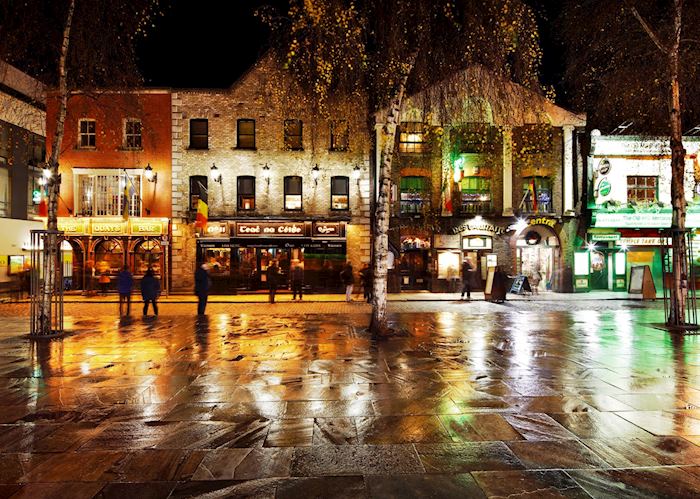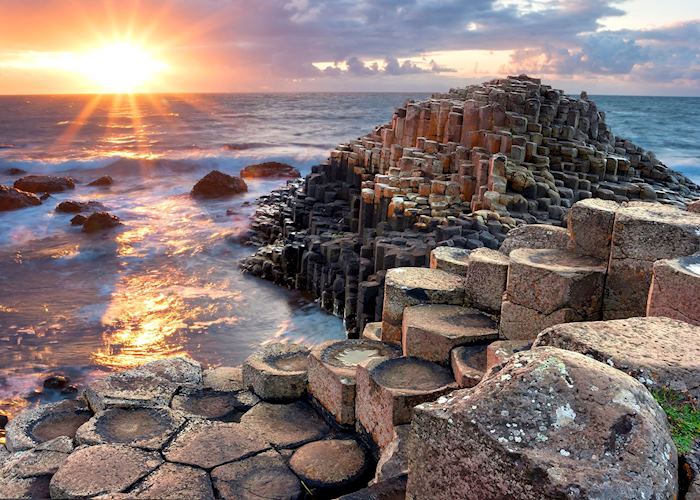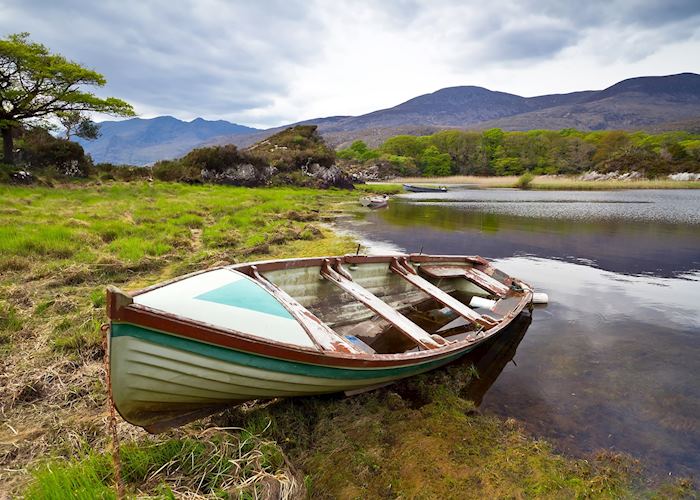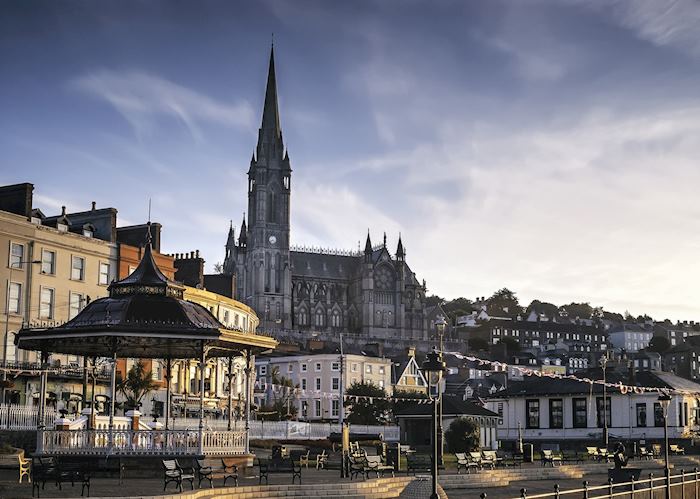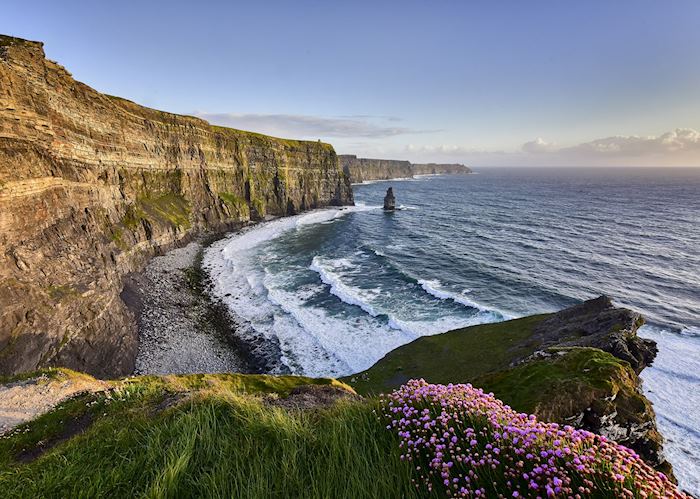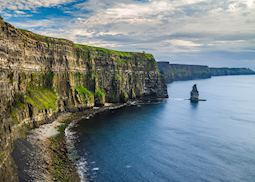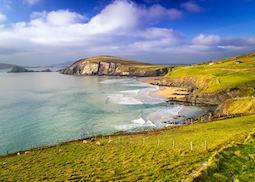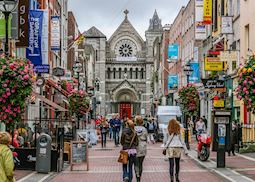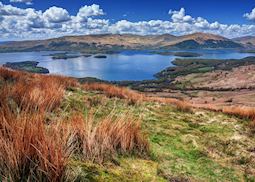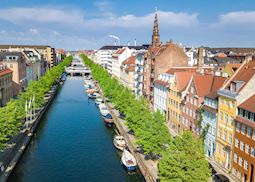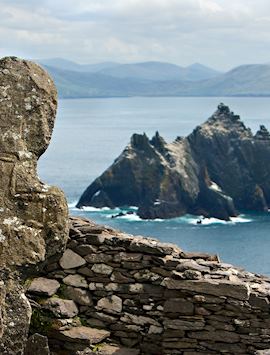
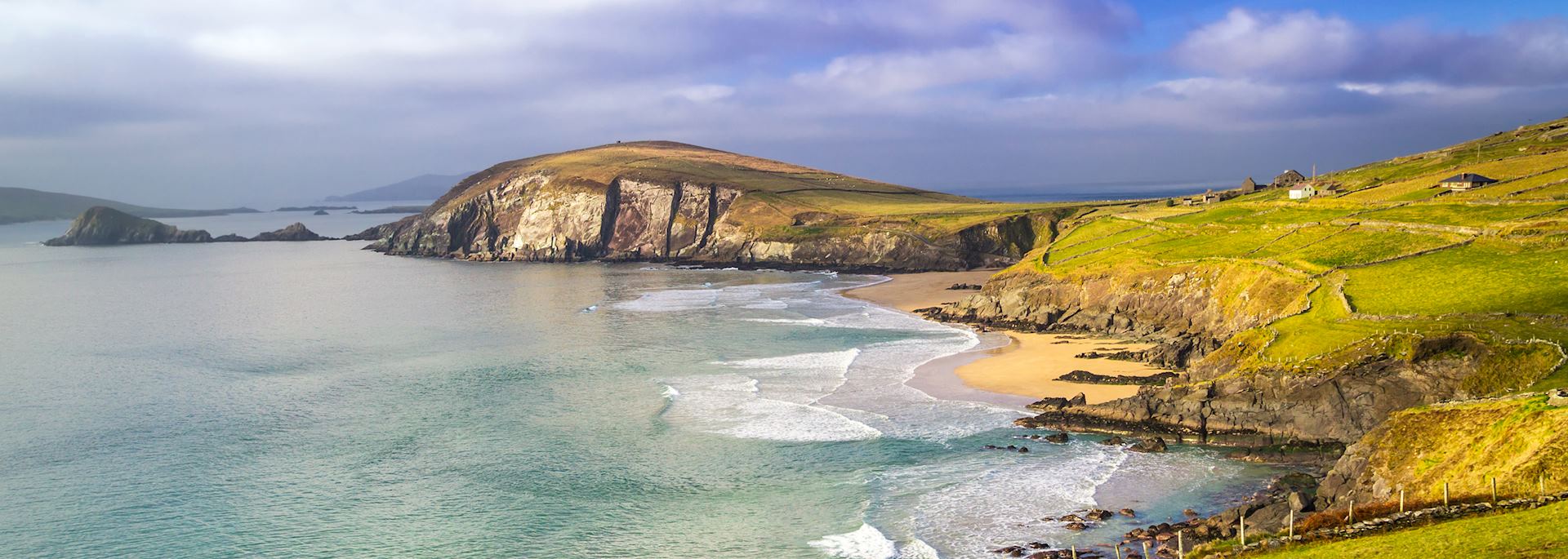
Tailor-made Ireland vacations shaped around your passions
Renowned for its warm welcome, literary genius, live music and green fields, Ireland is a small isle with enormous character. It's compact enough to explore easily, yet also incredibly diverse. Our Ireland specialists have a deep affinity with the island — north and south — and can bring you closer to the landscapes and the Irish people even at its most famous attractions such as Giant's Causeway.
Our Ireland specialists know the country inside out and can lead you to experiences you won’t find in a guidebook. On a tailor-made vacation to Ireland with Audley, you’ll see the highlights — and much more — your way. We’ll design your ideal trip with you, paying close attention to your interests, your travel style and your budget.
Try kayaking to romantic ruins on the Lakes of Killarney, take a literary pub crawl around Dublin or gain an introduction to Northern Ireland’s political history on a black taxi tour of Belfast. We also recommend getting well off the beaten path in places like the little-visited Beara Peninsula or along the stone-walled roads of the island of Inis Mór. Wherever you go, you'll be welcomed with that legendary Irish charm, regaled with stories and persuaded that the only way to do this place justice would be to plan a return visit.
Suggested tours for Ireland
These tours give you a starting point for what your vacation to Ireland could entail. Treat them as inspiration, as each trip is created uniquely for you.
Suggested activities for Ireland
Whatever your interests, our specialists will build activities into your trip that connect to how you want to experience Ireland.
-
Explore Inis Mór by horse and cart ![Horse and cart, Inis Mor]()
Explore Inis Mór by horse and cart
Inis MórExplore Inis Mór by horse and cart
Explore the island of Inis Mór in Galway Bay by horse and cart with a local driver who will reveal much about the island's history, geology and traditional culture as he takes you to ancient forts, natural wonders and deserted beaches.
View details -
The Cliffs of Moher by boat ![Cliffs of Moher at sunset]()
The Cliffs of Moher by boat
The BurrenThe Cliffs of Moher by boat
See the towering Cliffs of Moher from the sea on this one-hour cruise along the cliff base, getting you close to colonies of nesting seabirds, dramatic sea stacks and the sheer faces of one of Ireland's most famous landmarks.
View details -
Dingle Peninsula with a local archaeologist ![Dingle Peninsula]()
Dingle Peninsula with a local archaeologist
Dingle PeninsulaDingle Peninsula with a local archaeologist
Explore the many fascinating archaeological sites of the Dingle Peninsula on this full-day tour in the company of a prominent local historian. See ancient churches and forts, early Christian monasteries, carved crosses and the region's legendary beehive huts.
View details
Why travel with Audley?
- 100% tailor-made tours
- Fully protected travel
- Established for over 25 years
- 98% of our clients would recommend us
Best time to visit
Our specialists advise on the best months to visit Ireland, including information about climate, events and festivals.
Request our brochure
Covering all seven continents, The World Your Way shows you how you can see the world with us. It features trip ideas from our specialists alongside hand-picked stays and experiences, and introduces our approach to creating meaningful travel experiences.

Useful information for planning your vacation in Ireland
Ireland has two official languages English and Irish. Irish is a Celtic language related to Scots Gaelic, Welsh, and Breton, and is predominantly spoken in Gaeltacht areas in the west of Ireland but you’ll see it on road signs and all official documentation.
In the Republic of Ireland, which covers roughly five-sixths of the island of Ireland, the currency is the euro (€), while In Northern Ireland, which is a part of the United Kingdom, the currency is the pound sterling (GBP).
ATMs are easy to find, all major credit and debit cards are accepted, and contactless payments are accepted almost everywhere. Euros can be used across Europe, but Northern Ireland notes, which are different to those used elsewhere in the UK, are often unfamiliar to retailers outside Ireland and it may be best to exchange those in a bank or post office.
A standard tip in Ireland is between 10% and 15% for a restaurant meal. Check the total though — a gratuity is often added automatically. Tipping in pubs and bars is not expected. Drivers, guides, and hotel staff will appreciate a tip, but it isn’t always expected.
For the latest travel advice for Ireland, including entry requirements, health information, and the safety and security situation, please refer to the State Department website.
Food and drink is a huge part of Irish culture and in recent years the focus has been on locally sourced and seasonal produce, artisan food stuffs, and distinctive regional products.
Being an island nation, fish and seafood is plentiful. You’ll find delicate smoked salmon, creamy chowders, and fresh oysters and mussels along the coast. Although traditional dishes such as Irish stew, colcannon (mashed potato with cabbage and scallions) and boxty (fried grated potato) still appear on some menus, you’re more likely to encounter pan-European influences in most dishes.
Traditional Irish soda bread remains a local staple and you’ll find it in all shops and on most breakfast plates. Although Guinness, Ireland’s rich, full-bodied stout, is served everywhere, in Cork, order a pint of Beamish, a locally brewed rival with a more substantial bite. Whiskey distilleries are long established in Ireland, but craft beer and cider are also gaining ground.
A small island with a rich history and culture, dramatic landscapes, and a fair bit of rain, Ireland provides a wealth of experiences for the visitor. You could follow in the footsteps of literary heavyweights such as Joyce, Wilde, or Beckett on a literary pub crawl in Dublin, delve into prehistory on a guided tour of the Neolithic passage graves in Newgrange and the Boyne Valley, or discover the wonders of the Giant’s Causeway and the Antrim Coast.
Romantic castle ruins, wild national parks, and stone-walled fields litter the country, and whether you’d enjoy visiting cheesemongers and chocolatiers on a Dublin food tour, sipping peaty spirits at the Jameson Distillery, or exploring the Cliffs of Moher by boat, Ireland offers plenty of choice.
The choice of places to stay in Ireland is as varied as the landscape. You can stay in historic castles decorated in opulent traditional style, fishing lodges nestled in secluded valleys, or urban hideaways with sleek, contemporary design. The Irish are renowned for their hospitality, and whether you choose to stay in a family-run guesthouse or a plush, urban hotel, you’ll find a special welcome waiting.
In Belfast, history and grandeur combine in the Merchant Hotel. In Kilkenny, you can stay in stately Butler House, former home of the Earls of Ormonde, while on the shores of Lough Erne, you can stargaze in a dome as you fall asleep to the sound of the water. To get some ideas, browse our collection of places to stay in Ireland, and start planning your trip.
Most trips to Ireland begin in Dublin, the Republic’s capital. It’s a beguiling place where political and literary history collide, and local life never takes itself too seriously. From Dublin, you can head west to see the wild, raw beauty of Connemara, the otherworldly landscape of the Burren, or to join an impromptu traditional music session in Galway, Westport, or Doolin.
Discover Donegal’s deserted beaches or hike along the towering cliffs at Slieve League, visit the Dark Hedges that featured in the Game of Thrones, Belfast’s poignant Titanic Museum, or learn about the city’s troubled past on a black cab tour.
To the south, Cork has a character so strong its people joke about it becoming their own republic, Killarney sits at the foot of the country’s highest peaks, and Dingle is all windswept beaches and pubs that have changed little with the passage of time.
A direct flight to Dublin from New York City takes just over six and a half hours. From Boston it’s six hours, from Seattle nine hours, and from San Francisco, it’s ten hours. Aer Lingus, Ireland’s national carrier, is the only airline offering direct flights to the west coast, although some routes only operate during the summer months.
The time zone in Ireland is UTC+1 hour. Daylight Savings Time is observed from late-March to late-October.
Self driving in Ireland is easy and efficient and is one of the best ways to get around. You’ll need to be comfortable driving on the left, however. Trains are modern and reliable, but the rail network is a little limited and if you choose to travel by train, you’re likely to need to use buses or taxis as well. We can also arrange private drivers to take you directly to your destination.
There’s no border control between the Republic of Ireland and Northern Ireland and if you’re driving, the only difference you might notice is a subtle change in the road signs and markings.
Use our travel tool to find up-to-date visa and passport requirements for Ireland. Enter where you’re traveling to and from (including any stopover destinations en route or flight layovers), along with your intended travel dates and passport details, for a full list of requirements.
Your doctor can provide you with immunization advice for Ireland. You can also check the recommended vaccinations by visiting the Centers for Disease Control and Prevention website. Ensuring you’re up to date with all vaccinations recommended at home before you travel is also a good idea.
Ireland in pictures
Our expert guides to traveling in Ireland
Written by our specialists from the viewpoint of their own travels, these guides will help you decide on the shape of your own trip to Ireland. Aiming to inspire and inform, we share our recommendations for how to appreciate Ireland at its best.
-
![Introducing the UK and Ireland]()
Introducing the UK & Ireland
Watch a two-minute video showing the landscapes and cities of the UK and Ireland, filmed by Audley Travel.
-
Natural Ireland: the coast, cliffs and countryside ![Cliffs of Moher]()
Natural Ireland: the coast, cliffs and countryside
Natural Ireland: the coast, cliffs and countryside
Discover Ireland’s most scenic areas, from the moonscape of the Burren to the beaches of Connemara and the archaeological ruins of the Dingle Peninsula. Specialist Marissa suggests which sights to make a priority during your trip to Ireland.
Read this guide -
How to see traditional Ireland ![The Dingle Peninsula]()
How to see traditional Ireland
How to see traditional Ireland
Packed pubs, traditional music, bucolic sheep, farmhouse whiskey and Guinness stout — Ireland specialist Jackie talks about classic Irish sights and why you might want to visit Blarney Castle, even if you already have the gift of gab.
Read this guide -
Luxury vacations in Ireland ![Adare Manor]()
Luxury vacations in Ireland
Luxury vacations in Ireland
Ireland can show its indulgent side in various ways, says our expert Jackie, from stately castle hotels where you can take falconry lessons to a private cruise along the Cliffs of Moher, far from the crowds that clog the roads.
Read this guide -
What to do in Dublin: a first-hand guide ![Grafton Street, Dublin]()
What to do in Dublin: a first-hand guide
What to do in Dublin: a first-hand guide
Unpretentious and lively, Dublin is a compact capital city with lots to offer says Audley specialist Max. You can spend the day exploring Ireland’s history at Trinity College or Saint Patrick’s Cathedral, and spend the evening drinking Guinness in a Temple Bar pub.
Read this guide
